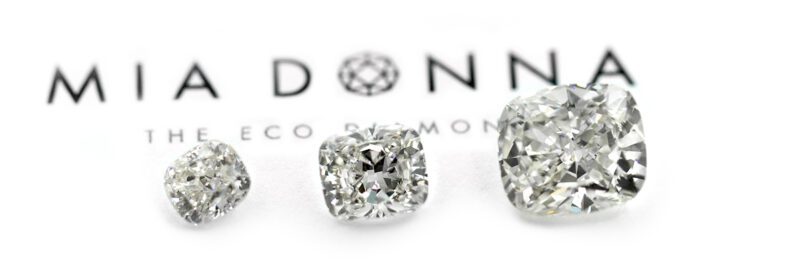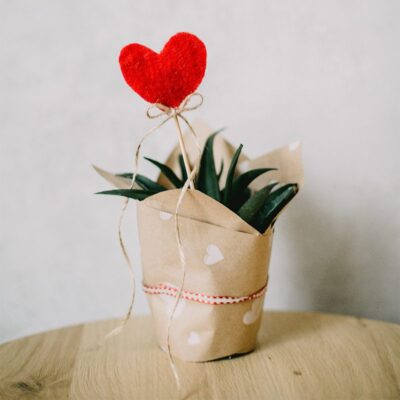Last Updated on August 28, 2023
Cut, Colour, Carat… Clear Conscience?
Giving or receiving jewelry is often part of important celebrations and significant milestones like weddings, engagements, birthdays, or anniversaries. Besides being a beautiful gift, these pieces can express love, commitment, and many other meaningful things.
Unfortunately though, the reality of jewelry production is anything but joyful — full of corruption, human rights abuses, and environmental destruction. No one would say they want a special occasion like an engagement to contribute to such horrible things… But don’t worry, there are sustainable and ethical diamonds and you can find the dream ring without the harmful practices!

What You Need To Know About Diamonds & Precious Metals
Maybe you’ve heard of “blood diamonds” or “dirty gold“; these names represent major issues in jewelry production and supply chains.
But what is a blood diamond? The mining of diamonds and precious metals can involve child labour, forced labour, and abusive conditions. Groups fighting for control of mines, theft, and workers/communities trying to stand up for their rights has resulted in incredibly violent conflicts and torture over diamonds and land. It’s a lucrative and corrupt industry with little protection or concern for the safety and welfare of those involved.
Mining also has a terrible impact on the environment, from destroying the Amazon rainforest to polluting water systems with toxic chemicals. On average, mines need to process about 1 tonne of rock for every 1 gram of gold (a wedding ring can use anywhere from 2-12 grams) and diamond mining is much more destructive — requiring about 50 tonnes of rock per 1g and only about 35% is actually gem quality. Pit mines can be so large they’re even seen from space.
Here’s a diamond pit mine in Russia — it looks alien and is hard to imagine the scale, but you can see tiny buildings in the top right corner.

“Conflict Free” Unfortunately Isn’t a Guarantee
Due to movies like Blood Diamond people are more aware of the ethical issues surrounding diamonds and look for conflict free diamond alternatives. The Kimberley Process was set up to stop trade in conflict diamonds but it’s not solving the problems; smugglers say it’s easy to get around and hasn’t stopped the black market. Conflict diamonds are “naturalized” to develop a new provenance, and Global Witness interviewed diamond traders smuggling diamonds from the Central African Republic who say it’s an “open secret”. They “mix [trafficked diamonds] with other stones, get the right papers, and send them on their way”, according to the article.
Brilliant Earth is a company often promoted as an ethical jewelry option and goes so far as saying their diamonds are “beyond conflict-free”. However, they were found to have suspicious diamonds — an investigation into their “Canadian” diamonds found they actually have a shady chain of custody, with the diamonds they looked into likely having an unknown origin.

So What Can You Do? And What Are Ethical Diamonds?
1. Buy Secondhand/Vintage
I’m a huge advocate for secondhand shopping. It’s incredibly environmentally friendly because nothing new is made and no new resources have to be used/extracted, and you also aren’t supporting companies with unethical and unsustainable practices; or — with jewelry — corrupt, damaging, and violent supply chains. Plus it’s a lot more affordable, and who doesn’t like to save money?
There are lots of places you can buy secondhand or vintage jewelry either in person or online through sites like Etsy. I especially like looking through the jewelry at antique markets.
2. Check Out Lab Grown Diamonds
We now have the ability to make diamonds in a lab, so there’s really no reason to mine them!
Lab grown diamonds are real diamonds — they’re exactly the same as mined diamonds, the creation process is just replicated in a controlled laboratory setting. This control actually allows them to create a higher quality, clearer, brighter, more sparkly diamond. So you can get a better diamond, for less money, and no unethical and unsustainable mining. It’s a win, win, win!
Some brands that make lab created diamond rings, ethical engagement rings, and other jewelry:
- Miadonna (they get an extra 💚 from us for also using recycled metals for their lab grown engagement rings and other jewelry)
- Kimai (they get an extra 💚 from us for also using recycled gold)
- Clean Origin
- Great Heights
- Lightbox Jewelry

3. Re-Design/Re-Work Something Existing
How many of us have jewelry that was gifted or passed down which is never worn and just sits somewhere collecting dust? Like with our closets, we tend to reach for the same small rotation of pieces. Special items like jewelry can be difficult to let go of, but isn’t it better for them to actually get used and appreciated?
One great thing about jewelry is old pieces can be remade or reworked into something you’ll actually wear. Sometimes this might just involved resizing or repairs, but you can also have gems removed and precious metals melted down into totally new pieces!
For our wedding we actually had gold from our families melted together and made into custom rings. They are so special to us because they are exactly what we wanted but also have the family history.💚
If you have pieces you don’t wear it’s also good to sell them; they can get appreciated and used by someone else instead of hiding in a drawer. Plus you can spend the money you make on something you’ll actually get a lot of use from! It’s a win for everyone and the earth. 🌎
There are fortunately a lot of different ways you can still have those beautiful and special pieces with the comfort of knowing you aren’t supporting dark, abusive, and destructive industry practices.
Updated August 23, 2022










Archana
Erin,
I was wondering about your take on lab made diamonds. The scarcity model and lust for the stone is instrumental in the declaration of something as “precious”. But if we go beyond and admire it for the design and the subtle sparkle it adds to our outfits, a lab made diamond meets the needs. Its cheaper too.
Also, Everlane is missing from your brand directory. Is there a reason for the omission ? Do you have information that shines light on their claims ?
THanks,
Archana.
Verena Erin
Hi Archana, I think lab-grown diamonds are really interesting and definitely more ethical than purchasing new diamonds. I don’t know a lot about how sustainable the production process is, but I think it could be a good option to combat the ethical issues with diamond mining. There are also ethical and environmental issues with the gold/metal mining too though, so ideally lab-grown diamond companies would also be using recycled precious metals.
Everlane isn’t in my brand directory because of their lack of sustainable practices and policies, and for being so into transparency it really bothers me that more information isn’t publicly available. I do think they are better than a lot of other companies but I think for a brand that markets themselves as having “radical transparency” they should at least have things like their Code of Conduct public. 😕